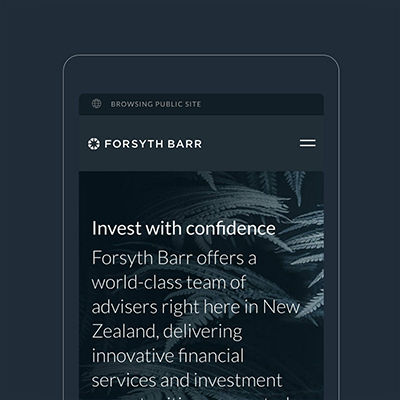Leveraging Cloud Architecture
Getting the most out of Cloud Architecture
The cloud offers many brands the ability to improve or extend their IT architecture in a way that simply wasn’t possible before. It allows organisations to scale up and down quickly and easily, without the need for expensive hardware.
Through leveraging cloud architecture organisations are able to take advantage of the benefits offered by the cloud. Many companies are moving to the cloud, and our team can work with you to ensure you’re taking advantage of all its benefits.
As more and more businesses move to the cloud, it's vital to have a good understanding of what cloud architecture is and how you can use it to benefit your business.
What is cloud architecture?
Cloud architecture is the process of designing an application, system or solution so that it can be run on a cloud platform such as Amazon Web Services (AWS), Tencent Cloud, Microsoft Azure or Google Cloud Platform.
The cloud is like a giant computer that organisations can rent space on, and use to run their applications and services.
Unlike traditional solutions, which are often designed to run on a single server or group of servers, cloud architecture is designed to take advantage of the scalability and flexibility offered by the cloud. This means that applications and services can be quickly and easily scaled up or down as needed, without the need for expensive hardware.
For example, if you have a website that is getting a lot of traffic, you can simply scale up your server capacity in the cloud to handle the increased demand. Previously, you would have to buy and install new physical servers, which can be a time-consuming and expensive process.
Why are organisations moving their operations to the cloud?
There are many reasons why brands are moving to refine or implement systems that are cloud-based.
The cloud offers agility, flexibility and scalability that traditional on-premises systems can’t match.
Organisations can use the cloud to build innovative new applications and services quickly and easily, without the need for expensive infrastructure. The pay-as-you-go model of cloud computing also means that organisations only ever pay for the resources they use, which can help to save money on IT costs.

We helped Forsyth Barr with their cloud architecture
Should your system be moved to the cloud?
Our team of experts can work with you to assess your current situation and help you decide if moving to the cloud is right for your business. We can also help you to design and implement a cloud-based solution that meets your specific needs.
Some of the signs your business is ready for the cloud include:
- You’re looking for a more agile and flexible solution than what on-premises systems can offer.
- You need to be able to scale your operations quickly and easily, without incurring extra costs.
- You want to take advantage of the many benefits of cloud computing, such as pay-as-you-go pricing and the ability to try new things without a big upfront investment.
If you’re not sure if the cloud is right for you, get in touch with our team today. We’ll be happy to discuss your options and help you decide if moving to the cloud is the best course of action for your business.
What's involved with building a cloud-based tech stack
If you've decided that the cloud is right for your business, the next step is to start planning your transition. Our team can help you with every aspect of this process, from designing a new cloud-based architecture to migrating your existing data and applications.
So, what's involved with building a cloud-based tech stack? For starters, you'll need to choose a cloud platform that's right for your business. There are many different options available, including public, private and hybrid clouds.
Once you've selected a platform, you'll need to choose the right mix of services and tools to run your applications and services. This will include everything from storage and databases to monitoring and security.
Some of the tools and services you might need include:
- A cloud storage solution, such as Amazon S3 or Google Cloud Storage.
- A relational database, such as MySQL, Oracle Database or Microsoft SQL Server.
- A non-relational database, such as MongoDB, Cassandra or DynamoDB.
- A content delivery network (CDN), such as Amazon CloudFront or Google Cloud CDN.
- A web application firewall (WAF), such as AWS WAF or Google Cloud Armor.
- A monitoring solution, such as Amazon CloudWatch or Google Stackdriver.
After you've selected the right mix of cloud services and tools, our team can help you to implement them in a way that meets your specific needs. We'll also provide ongoing support to ensure that your cloud-based tech stack is always up and running smoothly.
If you're ready to start planning your transition to the cloud, or if you just want to find out more about what's involved, our team is here to help. Get in touch with us today to discuss your options and learn more about how we can assist with your transition.


